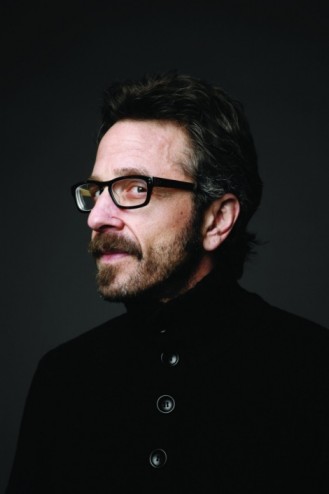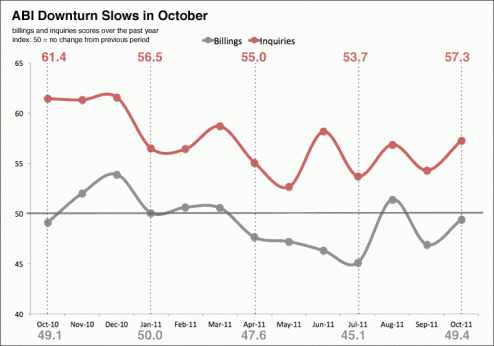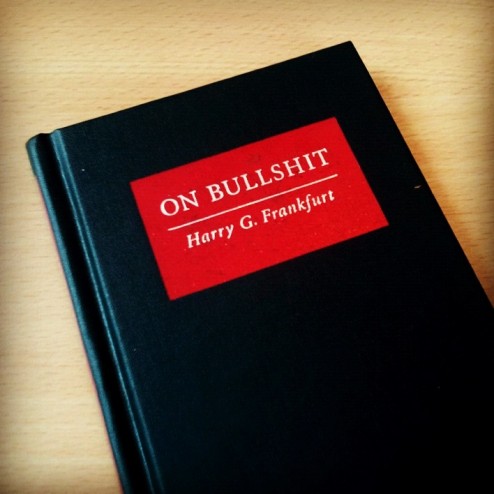The Real Architect’s Handbook: Things I Didn’t Learn in Architecture School:
An incisive and hilarious examination of the underbelly of the architecture profession, The Real Architect’s Handbook tackles the many issues facing architects and architecture students. From advice on how to keep your sanity (going home and psychotherapy) and what not to wear (no acid-wash jeans) to what kind of firm you should work for and what makes a good designer, this book answers all the crucial questions. These “What [not] to do’s” are for anyone considering architecture school and the profession. By critically examining the realities of the discipline (with a good dash of humour), this book provides invaluable survival tips and professional advice.
The Real Architect’s Handbook: Things I Didn’t Learn in Architecture School, at first glance, is a Swiss Army knife for the architecture student or young aspiring designer. At once, the seasoned veterans of the architectural profession, too, will appreciate this one, being able to identify with the comical minutia. Dig deeper and you’ll realize, aside from being a literal handbook that offers pragmatic advice for the ambitious, yet inexperienced, professional, it is subversive as it simultaneously pokes fun at a profession that is sometimes wrapped in pretense, elitism, egocentrism, opaqueness and esotericism. And, as you will find, the industry faultfinding within the collection of pages, is likewise cut with bits of philosophy, meditations on life and some decent observational humor. It’s funny and adds perspective in this fairly depressive economic climate.
I had the chance to have a conversation with the co-authors and illustrator of the book, Guy Horton and Sherin Wing. Over the span of about a week, I exchanged emails with the critics and prolific writers (check out their expansive collection of pieces for various premier sites listed below) about their book and the culture of architecture. We briefly discussed the fallacy of blind optimism during this downturn and the occasional absence of cordiality, etiquette and overall good vibes within academia and the profession. Finding solace in the readings of Kierkegaard and Deleuze was also a topic that arose. Like the book itself, I found them to be straightforward and honest, laconic without being glib, and smart without being affected.
By all means, get this book, it’s a welcome diversion. You don’t have to be a stuffy architect to digest it. It will probably even apply to your given profession. If not, at least it will give you insight into the head of your designer/architect friend/colleague and be your “Introductory 101” class, if you will, for this genre (architecture) of study and work…
–@teemunny
Guy Horton at…
Sherin Wing at…
INTERVIEW:
TONY TRINH: The Real Architect’s Handbook: Things I Didn’t Learn in Architecture School bounces around from the doling of pragmatic tips (82: Do not dress like an intern.), to expressing biting criticism (52: Respect and civility often seem to be scarce commodities in architecture.), it ranges to the utterly humorous (50: If you are an architect you should automatically qualify for psychotherapy and medication). You and Sherin also wax philosophically (46: Subvert the signature of the software, unless you consciously want the architecture to convey this signature), and there are observations and meditations on life and business (60: Architects should not intermarry. Inbreeding is not good for the gene pool.). What kind of advice or wisdom did you find come easiest? Which types of bits did you enjoy writing the most?
SHERIN WING: In terms of ease, this often coincided with what was also most enjoyable to write, i.e. insights that we often bandied about or situations we would hear people complain about. The irony is that while a lot of these things seem to be self-evident, people didn’t seem comfortable talking about them openly, as if somehow the canon of architecture as a profession cannot tolerate difference or dissent.
From my perspective, what was most enjoyable was also what seemed to me obvious but unspoken. I have found however that what I find is most amusing has not necessarily been what others see that way.
This is the same for the illustrations, which Guy had initially envisioned as intentionally pared down, rather than the highly complicated renderings one associates with the architecture profession. And indeed, one editor had suggested we use a more complicated illustration approach. However that undermined our goal which was to provide an “antidote” to the typical, overly-wrought illustrations one often associates with architecture presentations. My goal was not just to have fun, but to amuse our readers with them and oftentimes right before going to bed I’d have an inspiration about some illustrations that would have us both cracking up and honestly that’s what I hope our readers are doing as well: laughing while gaining some perspective.
TRINH: I think that irony is a testament to how self-aware yet insecure architects can be (I will include myself in that bunch). Let’s talk about that uncomfortable feeling. One of the refreshing facets of a project like TIDLIAS is its frank honesty; though most of that frankness is served with humor and a healthy dollop of sarcasm, it all rings true, pretty much. I was listening to comedian/humorist Marc Maron‘s WTF Podcast months ago and he was going off on this jag about how ‘blind optimists’ are preachy, arrogant, lack empathy and are just as grating as pessimists. “Positivity implies intolerance 90% of the time,” he proclaims. I found myself nodding vigorously as he was ranting; it kind of validated my cynical sensibilities. Given our current economic milieu and how depressing things are, did you both ever find yourselves dialing back the sarcasm in fear of coming off as cynical or pessimistic? Not to imply that TIDLIAS is completely cheerless but did you have to watch how blunt you were at times? I’m just curious about the editing process. I’m sure the answer is, “yes,” but I would like for you to expand on this.



GUY HORTON: We totally get that blind optimist thing you bring up. When we did the first version of the book for ArchDaily we felt like we had been writing about the dark side of the economy since 2008 while much of the mainstream architectural press was talking about “signs of improvement” or the ABI ticking up .002% and why that’s cause for celebration and somehow newsworthy.
I was unemployed and there were no doors opening. Meanwhile I’m reading about how things are looking up. It wasn’t my reality and I knew there were thousands out there in the same situation that must feel like they don’t have a voice or that they are invisible. It was like the MSM (mainstream media) for architecture was still chugging along painting this portrait of a great business and thriving practices. There would be the occasional nod to layoffs or a “downturn” but mostly, since the beginning of the Great Recession, architecture wanted to portray itself in that optimist mode you mentioned. A lot of really bad stuff happened in the recession and continues to happen now.
It would be interesting to do a graph that tracks the perception of improvement in the architecture sector of the economy from 2008 to now in the architectural press. How many times have you heard “Things are picking up.” over the last few years? And, by the way, things are picking up! 2012 will be better than 2011.
So, about sarcasm. What sarcasm? And as for worrying we might go too far? We really didn’t give a rat’s ass at that point if people’s feelings were hurt. We knew the entire segment of the profession that had been dispossessed would relate. We also felt like this was a way for us to be empathetic and realistic.
So we also didn’t really worry about being blunt. We had people like Søren Kierkegaard backing us up in dealing head on with the reality of existence. No one seemed to be talking about this side of our glamorous and vital profession.
It’s interesting to look back on when we first wrote it. We didn’t edit too much from the original ideas and language. It was just flowing. Sherin could tell when I was too close to some issue, however, and she could drive the point right to the heart of the matter. As you can tell, I tend to go on and on and on. What was the question again? No we weren’t being sarcastic.

TRINH: It wasn’t a question as much as it was getting at your mindset with the delivery of all of this. As for the perceived sarcasm, I may be speaking out of turn. I’m projecting there. Although these nuggets come from an earnest place, the overly sensitive architect in me read some of them as digs. Some of them are real stingers. Or say, 22: Bathe regularly and change your underwear…There is no honor in being gross or stinky. Painfully obvious! But, as you said, you’re serving up medicine in the most deliberate manner.
We’re dealing with hard truths, like the economy sucks, it’s a ghost town out there, and it’s not going to get better soon. “Things are picking up.” Heard it a million times. We’ll believe it when the debt collectors quit calling.
A core motif of the book, if I had to reduce it, is, “Look, don’t depend on architecture to find your happiness, survive and watch your back.” You just brought up existence, perception and Kierkegaard. Was penning TIDLIAS cathartic for you?

WING: Some of the points that you and other people may see as zingers also come from personal experiences and come out of private jokes that we realized can actually be generalized. For example you mention the bathe regularly point. That was a private joke that came out of the very real circumstance that Guy would spend days at studio without coming home. During these very frequent occurrences, I would drive from the beach to downtown LA and bring him changes of underwear and a change of clothing (he kept deodorant there already). This was something I would tease him about and we would both laugh at the craziness of the time. Again, an example of something that we think is amusing which may be perceived differently by other people.
Obviously, it was also a painful reminder of that period which, unfortunately, work also replicates. So, in that sense, perhaps it was cathartic but because many of these situations persist, it also reminds us of what we think is important outside the profession.
The other point is that we also read about and are very aware of economic and political issues that impact other professions and we brought a lot of that into the points in TIDLIAS as well. Many people who are not architects have commented on the applicability of the book to them and their professions. I think that reflects not only our mindset as we wrote it but that many of these conditions are shared by other professions as well. Maintaining a healthy balance is difficult no matter where you are but that said we have found that architecture is more extreme than say academia and is more on par with say law.


TRINH: Sherin, you brought up the illustrations earlier. Since “101 Things…” was first posted on ArchDaily, you have come out with this published volume which now includes funny, primitive cartoons that add levity and amusement. My personal favorite cartoon is of the architect attempting to pay the pizza delivery guy with “prestige of working at a famous firm”. The graphics and look of The Real Architect’s Handbook: TIDLIAS reminds me of text books and instructional posters you would find in grade school. It’s ironic given how architects are intellectual, dare I say, verbose. Was it a challenge keeping it simple? I mean, you could conceivably elaborate and write an essay for each one of the 101 points and topics mentioned; some of them already have footnotes. Also, why Le Corbusier on the cover? Is The Real Architect’s Handbook a reference or slight commentary on Towards a New Architecture?


WING: I’m so glad you liked that one! It just proves again that it’s unpredictable what resonates with different people! I’ll answer the part of the question that applies to me, namely the illustrations inside TIDLIAS. Since it was Guy’s original concept to keep the illustrations simple, it wasn’t difficult–the challenge was to try to support the points in a somewhat meaningful, yet humorous way that I hoped would resonate with architects and architecture students.
As to the issue of elaborating on the topics, one of the earlier editors we were working with suggested that we do just that: elaborate in detail the intent and meanings of each point. We did try that and because we are both also trained in academia, we could do that. However, we found that it just didn’t work because it detracted from the points rather than adding to them. And after all, we were also trying to have some fun: long explanations and footnotes just took the fun right out of it.
I’ll let Guy elaborate on this issue as well as the last one, regarding the cover…


HORTON: You know…I did think of Towards a New Architecture, or Toward an Architecture as it might be translated, but that was more of an afterthought. I mostly wanted to play with this idea of the iconic status of “the architect” and at the time I was reading a biography on him and he seemed like the most obvious icon. People I showed the initial design to immediately recognized him, which was I figured was good. It doesn’t go much deeper than that. I just wanted an eye-catching image. The color palette was a nod to a book entitled, Dialectic of Enlightenment.


TRINH: Another cartoon I appreciate is the one that accompanies “43: If you are invited to be on a jury, don’t trash the student just to make yourself look good or to contradict a rival on the jury. Be constructive and try to help the student. This is the point.” In it, the rude critics either bash the project/presenter or are bored and preoccupied. I have definitely been there on both ends as a presenter AND critic. You also bring up instructors who cultivate a cult of personality (83), Archi-babble (70), the lack of respect and civility (52), hipsters (24), and asshole bosses (34). What is it about architecture within academia and the profession that lends itself to much pretension, egocentrism, opaqueness, esotericism, and downright absence of etiquette? I don’t mean to blanket bash but there’s a prevalent amount of jerks within this culture and genre. What’s your opinion and observation?

WING: This is definitely a question both of us will be answering and probably quite differently. First, I’m glad that you referenced your experience as a student, practitioner, and a critic, because all those experiences are central to the points we were making regarding some of those stances you acknowledge, i.e. egocentrism, pretension, and so forth.
One of the things is that the educational process, no matter what it is, requires a certain level of indoctrination. That ranges from adopting a specific lexicon and dress style to modes of self-expression, whether they be in writing or in visual forms. That is the “apprentice” aspect. What is different about professional schools is that because so many more students are accepted into a class, the potential for initial homogeneity is much higher, hence the striving of all the students to distinguish themselves is equally high. Graduate programs, whether in the sciences or humanities by contrast admit far fewer students, and each student is often assigned a specific, and different, graduate advisor. The competition is greater so the initial striving for individuality becomes heightened. And if it isn’t checked, it can easily continue beyond one’s education.
But that is only one, very small aspect of this “phenomenon.” Another is the professional “hazing” that occurs, again beginning in school. That includes the often unnecessarily long hours–many of which are actually spent surfing the web or chit-chatting–to produce works that, once one graduates, many people realize are neither the “masterpieces” they thought they were, nor are they very important to either gaining or remaining employed. Nevertheless, this ethos of proving that one is “cooler” not only by establishing one’s individuality as alluded to above, but also by who can stay awake longer, at school longer, can go without bathing longer, become markers of status that, again if they go unchecked, really skew one’s perspective far beyond school. These are, after all, very strange and yet significant ways that students establish that they are stronger and even better than the next person. And for undergraduate degrees, that is five years of this kind of indoctrination, for grad school, 2-3 years, and it isn’t exactly rejected once one begins working in the profession. So this also I think not only breeds, but perpetuates a certain attitude.
These conditions, combined with the emphasis of architecture on visuals which are supported by a smattering and often very superficial understandings of deep cultural theoretical models (which both Guy and myself read a lot of), I think creates an inherently unstable environment within which many people find a need to constantly prove themselves. Put more succinctly, a constantly shifting environment that emphasizes the latest “cool” trends, many of which are not understood very well or deeply, breeds insecurity, and many people deal with that by posturing.
That said, these attitudes are not exclusive to architecture. One can see that many of them apply as easily to other professions and that is one comment we receive consistently: that these points, or aphorisms, apply to many different fields.
HORTON: OK, Tony. Here’s my take. The main observation I have about this is that there are a lot of individuals crammed into a very dense playing field, with fewer and fewer opportunities, all competing for a smaller piece of the pie. It’s extremely competitive and this comes out in all facets of the profession, academia being no different. Being in the profession in different capacities, I obviously have a lot of personal experience with this. Most of the people I meet are nice and there is a definite, “We’re in this together” mentality, a culture of teamwork at heart. That being said, it can be really cut-throat and in-your-face at times. People protect their turf as the pressure increases. When opportunities are few and far in between, the aggression factor goes up. There are a lot of people trying to get into fewer and fewer doors. You can always open your own office as an escape from this, but can society and the culture really accommodate that?
Architecture is almost like the indie music scene in some sense. Don’t over-analyze that! It’s still its own animal that can’t be simplistically de-coded or “solved.” Reading Deleuze really helps. Not for design but for understanding what you get yourself into by getting into architecture. It’s a humanistic pursuit, but it can be dehumanizing at times. It’s like when Mitt Romney says he likes firing people. It shocks people to hear this, but he reflects a perspective that allows business to be business. Sometimes it’s about numbers, cold economics.
Obnoxious behavior can occur in any profession. Just look at Wall Street and banking! Architecture tolerates a certain measure of this as well, probably because of the eccentric “genius” thing. It’s kind of remarkable given how small the community actually is. Everyone knows everyone, right? But still, you see some amazing things on juries and in professional contexts. Bad behavior, Man! It could also be that there are just a lot of crazy-ass people who end up in architecture because it’s one of those creative fields that attracts eccentric people with “personalities.” Myself, included. Just ask Sherin! You hear of similar things in the film industry–the way people treat one another at times.
When I was in the humanities, there were definite similarities but fewer opportunities to express personal eccentricities or asshole-ness. The work is more solitary and introverted, which can lead to other personality issues, obviously. In architecture, we are always on stage and bumping into one another with all of our insecurities and hang-ups. It’s a show. How do you know when it’s performance or when someone is just that way? I think there is a culture of performance that comes into play. Some people are real masters at this. Maybe some people get lost in the performance.
That being said, everyone I know is great! And I love all of you! And I expect to be invited to be on your juries again soon! And don’t mess with me because I know kung fu! People who know me will get this, of course.
I think an architecture reality show could actually be hilarious. Though a lot of the time it would be really boring, just watching people work on their computers, drink coffee, and check their smart-phones all day.

TRINH: I love it. These are thoughtful and honest responses I am soaking in.
Ah, yes, Gilles IS fun reading. It’s all about folding and unfolding, right? Vive la différence! I have A Thousand Plateaus buried in a box somewhere; we need to crack that one open when we’re feeling a bit disenfranchised, along with The Real Architect’s Handbook, of course. You also recommended On Bullshit by Harry G. Frankfurt, Architecture: The Story of Practice by Dana Cuff, and some Jane Jacobs. I read Italo Calvino‘s Invisible Cities a long, long time ago.
What else am I missing?
Let’s wrap this one up on a buoyant and ambitious note. The book is laconic, smart and a delightful diversion along with being helpful to the students and young designers who may be struggling out there. The handbook/TIDLIAS has been making the rounds for awhile; have you considered going beyond the published volume? Possibly a smartphone app? I think a Twitter feed dedicated to TIDLIAS would work well. How about teaching a class at SCI-Arc or UCLA; if not a class, maybe at least a lecture? I think you both really have something here.





WING: Well, I think I have to thank you for giving us some really thoughtful and challenging questions: the answers are only as good as the questions. I’ll let Guy answer the bit on the readings, but I can give a shot at the other suggestions. To be honest, I think you’re giving us some good ideas! We are actually not stopping with TIDLIASeither–we’ve got some other things in the works because it’s responses like yours and a lot of other people’s which makes this worthwhile!
HORTON: I could try and be funny about consumer spin-offs from our book. I’ve thought about it! But I think the point is to put the ideas out there. Teaching. When you are dean somewhere give us a call! I’m sure our black capes are around here somewhere. Would you offer benefits?
TRINH: I would if I could. Thank you for having this exchange with me about the culture of architecture and your book. By the way, I’m in the NW currently and Michael Graves‘ Portland Buildingsends its regards.


